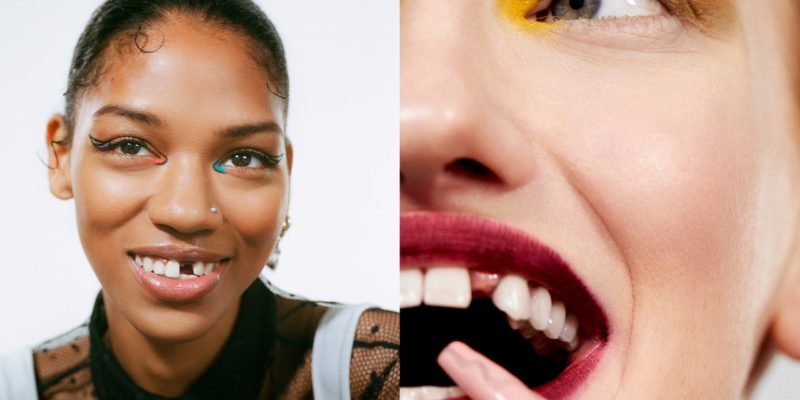
This story is a part of Show Your Teeth, a package in which Allure examines dental care (or lack thereof) in the U.S. and what we can do at home to better care for our teeth.
I was a sad kid with a sad smile. When I was growing up, I rarely broke into a grin or erupted into a giggle. I did have things to laugh about, but I was laser-focused on hiding what was inside my mouth. Uninhibited displays of joy took a back seat because my teeth were so crowded that by the time I was in fifth grade they had begun growing on top of one another, in every which way. Lateral incisors were hidden underneath fast-moving canines, which were simultaneously being pushed out due to emerging wisdom teeth. And that was just the top row. I was also dealing with teeth that grew in sideways, slanting so far to the right that they were crushing back into my gums.
In a nutshell: My teeth were crooked, with cavities riddled in between. But I was a child living in a single-parent household of five that relied on welfare and numerous government programs to keep the lights on and food on the table. Orthodontics, let alone basic dental care, was not a priority — or a possibility. We qualified for Medicaid — a health-care program that, along with the Children’s Health Insurance Program, had enrolled more than 37 million children by the end of 2020 — but coverage was inconsistent. And it wasn’t until 2016, long after I was living on my own in New York City, that my home state of Florida passed legislation to allow most Medicaid recipients to enroll in dental plans. Without a way to fund a new smile, I spent a lot of time and so much emotional energy covering up the one I had.
Looking back at my tight-lipped school pictures or snapshots of me as a teenager with my hand hovering over my mouth, it’s clear that I was embarrassed by my smile. I was ashamed of those chaotic teeth that betrayed my lower-class status as soon as I parted my lips. I yearned for the shiny metal rows of braces my classmates wore. Social interactions found me crippled with anxiety, afraid to open my mouth for fear of judgment of my lack of dental care. That fear followed me wherever I went and I played the shy card in school, up until I landed my first real job.
When I was 23, thanks to a full-time position with dental benefits, I was able to begin the process of getting the straight teeth I’d been made to believe were required to be considered beautiful and sophisticated. But my entry-level, $35,000-a-year job as an editorial assistant didn’t cover most of the $6,000-plus Invisalign expenses. (In the U.S., the average cost of straightening treatments for adults can range from $5,200 to $7,500, according to the American Dental Association.) Even with dental insurance, I still couldn’t really afford to buy the straight, white smile I was being sold in magazines and on TV — but I took on credit card debt to do it.
Correcting my crowding felt like the only choice I had in order to move up in the world, particularly in the beauty industry where I was working. In my mind, straightening my teeth meant that I’d finally have a smile that wouldn’t make colleagues question how I landed a job in a field built on aesthetics. I went through three and a half years of orthodontist appointments, more than 40 sets of plastic retainers (switched out every two weeks), and at least 50 tubes of travel-size toothpaste for on-the-go cleanings between meals — all in an effort to feel accepted. Whether that acceptance came from myself or my peers is still up for debate.